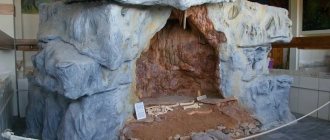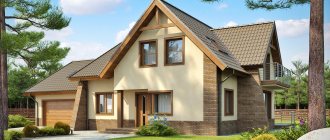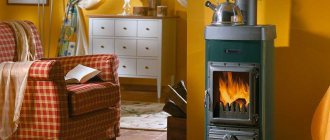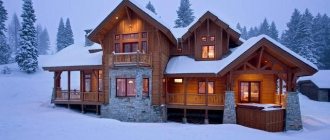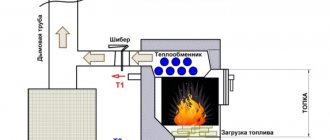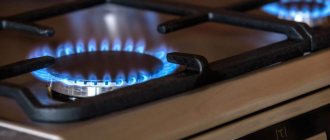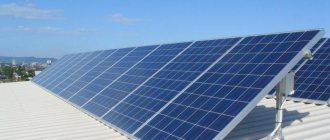Insulating the house instead of heating
At first glance, giving up heating may seem like a utopia, but in fact it is quite possible to get by with high-quality insulation.
The fashion for such passive (super-economical) houses has long embraced a significant part of Europe. The passive house was designed in Germany by the Passive House Institute, and the specific heat consumption for heating should not exceed 150 kW/h per 10 sq. m. m per year. Taking into account all household needs - operation of electrical appliances, lighting, hot water, this figure should not exceed 120 kW/h per 1 sq. m per year.
Of course, there are many people who will argue that in our climate this idea is impossible, but this is not at all true. A ready-made example can be considered neighboring Finland with a more severe climate, where an entire block of passive houses was built in Helsinki, the annual electricity consumption of which is only 750-850 kW/h per 1 sq. m. m.
Future plans suggest reducing this figure to 700 kW/h. The secret to success lies in sufficiently thick walls, as well as the installation of low-e glass that blocks infrared radiation to the outside, as well as the use of heat pumps.
Due to the fact that passive houses are not yet being built in our country, it is quite difficult to determine the economic effect of such a decision.
Earth's energy can heat your home for free
One of the alternative heating systems is geothermal. It is based on the use of Earth's energy. This is the heat of the earth, groundwater, ambient air, converted by heat pumps (HP)
It is important that the temperature of the medium used by the installation is above zero
Design and principle of operation of a heat pump
To operate a geothermal system, electricity is needed to transfer the resulting heat. A heat pump, using 1 kW, produces from 2 to 6 kW of heat.
The basic principle of operation of a heat pump is to collect heat, convert it and further transfer it to the heating circuit. This is realized thanks to the design of the device itself.
The HP consists of 3 closed circuits involved in the process of obtaining heat for heating a private house:
- external - designed to collect heat from sources. Antifreeze or saline solution circulates along the circuit;
- internal - filled with refrigerant, often freon;
- heating circuit filled with coolant.
The freon filling the internal circuit is heated by the heat coming from the external circuit. Having a low boiling point, it turns into gas in the first heat exchanger - the evaporator. Then it enters the compressor, where it is compressed, as a result of which a lot of heat is released, and the temperature of the gas itself increases many times - up to 65 degrees.
Next, gaseous freon enters the next heat exchanger, called a condenser, where it leaves its heat. Freon, having parted with most of the heat, comes under pressure to the relief valve. Here the pressure drops sharply, the refrigerant cools and, having assumed a liquid state, again enters the evaporator.
The heat left by the freon in the condenser heats the liquid circulating in the home's heating system. If this system includes underfloor heating, it is possible to achieve the most efficient heating at minimal cost.
Feasibility of using TN
Heat pumps - heat pumps, which remove heat from the environment, come in different types. It all depends on the type of environment used as a source of heat intake and the type of coolant used. Accordingly, the following types of TN are distinguished:
- air-to-air;
- water-air;
- water-water;
- soil-water.
The first two types of pumps are used in air heating systems, and the second two types are used in systems with liquid coolant.
The vertical version of the heat pump is the most efficient in obtaining energy from the earth, but it is the most expensive
The most profitable from an economic point of view will be the use of water-to-water HP. This option is advisable to use if there is a non-freezing reservoir near the house into which pipes for heat intake are laid. The heat pump allows you to receive 30 W of heat from 1 m of pipeline. Depending on the area of the private household and energy needs, the appropriate number of pipes will need to be laid.
Air pumps will not replace traditional heating in regions with harsh climates. As for heat drawn from the ground, this is a very expensive project. They use a horizontal geothermal field device, vertical and cluster drilling. With the horizontal option, it is necessary to build a geothermal field to a depth greater than the freezing level. This is about 1.5-2 m. The area of such a field is impressive - from 200 m2.
HPs are capable of replacing conventional fuel in the heating system, ensuring complete energy independence for a country house
To implement a vertical and cluster project, drilling to a significant depth using drilling rigs will be required. This is a very expensive service. Equipment of this type of heat pump is advisable for cottage owners who do not think about the cost of work. Heating that uses heat from the bowels of the earth can completely replace solid fuel or gas.
Geothermal heating is best used in tandem with a water-based “warm floor” device. It allows you to get the most optimal result. Significant disadvantages include the long length of the heat collection pipeline, expensive excavation work to install the system, and the need for a large area to develop a geothermal field.
Biogas plants
Organic alternative electricity is produced using biogas systems. The devices allow you to process poultry and animal waste. The resulting gas undergoes purification and drying, and is then used as a coolant. Residual masses will be an effective and safe fertilizer for the soil.
Principle of technology
Gases are formed during the fermentation of biological waste of animals and birds. An anaerobic environment without access to oxygen will be optimal. It increases the activity of mesophilic and thermophilic bacteria. For the process to be effective, the mass will need to be mixed by hand, using a stick or mechanical stirrers. Under ideal conditions, 1 liter of a closed container heated to a temperature of +50 degrees produces from 4 to 4.5 liters of gas.
Biogas system for a private home
The simplest biogas plant
The simplest bioreactor is a container with a lid and a mixing mechanism. A hole is made in the lid for the gas exhaust hose. Its quantity will be enough for 1-2 burners.
An underground or above-ground bunker increases the usable volume. The underground structure is made of reinforced concrete with a top layer of thermal insulation. The container is divided into compartments. Manure is loaded into the conveyor, filling the bunker to 80-85%. The remaining area is used for gas accumulation. It is discharged through a special tube, the second end of which is located in a water seal. After drying, the purified gas enters the house.
Alternative types of heat and electricity production are currently not available to apartment residents. They can be used by residents of private houses and farms. The only drawback of renewable sources is the cost of setting up the system, but the financial investment pays off after 1-2 years of operation.
Additional sources of savings
When building and technically equipping a house, it is important to correctly calculate the required boiler power. Excessive equipment capacity will lead to excessive consumption of gas fuel and increased payments
Proper layout of the thermal piping can reduce costs by up to 15%.
The installation of a collector coolant distribution system allows you to save your budget. In the bedrooms you can increase the heating at night, in the living room - during the day. It is advisable to install automated temperature sensors in the house or country house. You need to do this once, enjoy the result constantly. When the outside air temperature drops, the gas supply and the operating intensity of the heat boiler increase. The sensor can operate remotely, which is especially convenient for adjusting the heating of a country house.
A modern version of the ventilation device can significantly reduce gas consumption for heating. Installing a recuperator, in which hot air leaves the room through the inner pipe, and cold air enters through the outer jacket, warming up at the same time, allows you to heat the house with minimal fuel consumption.
You can install heated floors in living areas. This is an economical way to raise the air temperature in your home at minimal cost. Of course, you need to install gas consumption meters. They help to significantly save money on heating.
Infrared heating
For infrared heating of greenhouses use:
- infrared lamps for greenhouses
- infrared heaters
If we take into account the fact that such an energy carrier as electricity is the most expensive, then it becomes clear why the plan heating system is gaining momentum.
Possessing high efficiency, they heat plants and soil without heating the air.
Then, the already heated soil and the structure of the room release heat into the surrounding atmosphere. Moreover, it is warmer below, i.e. the soil warms up well.
Savings become possible due to the fact that the infrared heater does not work constantly. It can be equipped with a thermostat that controls the temperature. The IR heater turns on only to maintain the required temperature.
It is essential that infrared radiation is completely harmless to people and plants. By using infrared heating in a greenhouse, it is possible to create different temperature bands for different types of plants, which is very comfortable for planting.
This heating is ideal when you need to raise the temperature in the greenhouse in a short period of time. The heaters reach the set temperature in just ten minutes.
What is alternative heating?
There is probably no person who has not heard about the existence of alternative heating. However, when classifying one or another type of energy production in an unconventional way, some confusion arises. It is mistakenly believed that the use of infrared radiation, biofuels, geothermal energy and a number of others are all alternative energy. Therefore, when determining alternative methods of obtaining energy, it will be correct to consider as such those for which the consumer does not pay the energy supplier and at the same time the costs of obtaining it are at an acceptable level.
Heating a house without gas: there is an alternative
Today, heating a house without gas or electricity is quite affordable and allows you to quickly and efficiently heat any building, making it more comfortable and cozy.
Despite the fact that gas and electricity are considered the most modern types of fuel, they can be easily replaced with alternative heating for a private home. which, by the way, has been used by our ancestors since ancient times.
The most efficient heating of a dacha without gas can be organized using the same firewood. Heating a private home with wood is still in great demand, especially in regions where there is no possibility of an affordable connection to the main gas pipeline.
Wood burning boiler Atmos
With all this, stoves (both traditional and modern) can be used for heating and cooking, which is important, especially for small country houses. In addition to the stoves themselves, heating a country house without electricity or gas can also be organized using solid fuel boilers
In addition to stoves themselves, heating a country house without electricity and gas can also be organized using solid fuel boilers.
The basic principle of operation of the equipment is heating of the coolant (water), which in turn enters the radiators and heats the house.
Currently, for people who are looking for efficient and inexpensive heating of a country house without gas, the market offers several options for boilers, including gas generators, pyrolysis and the most classic.
This heating option has many advantages, including the availability and low cost of fuel, as well as a high level of safety (according to existing standards).
Today, heating a private home without gas or electricity is a completely acceptable and affordable option. Thanks to the active development of technology, as well as the availability of a mass of different types of equipment on the domestic market, every person whose house is located at a great distance from gas mains can provide effective heating of their home, without extra costs.
Heating a house without wood or gas: options exist
If for some reason in a country house it is not possible to use gas or wood as fuel, then it is quite possible to organize efficient heating without gas and wood, since the equipment and technologies make it possible to create productive and reliable systems.
It should be noted that for a summer house or private house without gas and firewood, electric boilers can be used - this is an excellent alternative to solid fuel or gas.
But electricity also costs quite a lot today, and therefore many people choose energy-saving heating without gas, wood or even electricity.
As a rule, such economical and profitable heating of a country house without gas involves the use of environmentally friendly technologies, directly from fuel created by nature.
One of the latest achievements of engineering technologies that provide heating without wood or gas is a heat pump.
This unit is very popular; it allows you to easily heat a country house, cottage or cottage using the heat of water, soil or the bowels of the earth.
Working principle of a heat pump
Thanks to the existence of such equipment, heating a wooden house without gas is possible and is distinguished by its environmental friendliness, accessibility and efficiency.
It should be noted that the only drawback of heat pumps is the initial installation cost, but it fully pays for itself over the entire service life, since there are no additional maintenance costs.
Advice
If you have a limited budget, we advise you to pay attention to heating systems with natural circulation
Advantages of heat pumps:
- Low fuel cost.
- Easy to install and maintain ecotherm units.
- System safety, both for human health and the environment.
- High energy efficiency, the ability to heat even the largest house at minimal cost.
Liquid fuel boilers
You can heat your living space using equipment that runs on liquid fuel. Diesel is used as fuel. Such boilers are equipped with fan burners.
This device atomizes fuel and supplies it to the combustion chamber.
The device is equipped with a special regulator. It controls the appliances that are connected to the boiler. This could be a burner or a pump.
An important parameter of an oil-fuel boiler is power. This option requires preliminary calculation. This takes into account the number of window and door openings, the thickness of walls and ceilings.
A separate room is selected for installation of the liquid fuel boiler. It should have a hood and a place to store fuel.
To heat a house without gas or electricity, you need to equip the device with a special filter. This will prevent the injectors from clogging.
If the fuel needs to be replaced, the burner is reconfigured.
Diesel fuel equipment is characterized by noiselessness and performance.
Liquid fuel structures have high efficiency and can heat large rooms.
This system can be completely autonomous, which allows heating without gas or wood. No permits are required to install such a system. Such designs operate on various types of fuel and with any coolant.
When arranging equipment, it is worth considering the following features:
- Fuel costs increase compared to gas appliances.
- A container for storing fuel raw materials is installed in the room.
- A separate boiler room is being built. since the heating system is characterized by unpleasant odors.
- Electricity will be required, since when the power goes out, the backup generator must be started. In this case, you can heat your house without gas.
If we compare performance and characteristics, an oil-fuel boiler is on the same level as a gas boiler, differing only in the price of fuel and its types
We heat your home without using gas
So, despite the widespread belief that using alternative sources of home heating is very expensive, heating without gas and electricity is a completely affordable option. In addition, this way you can quickly and efficiently heat any room. Although gas and electricity are the most modern systems, they can be easily replaced by alternative heating, which, by the way, was used by our ancestors.
Today, such heating is quite common, especially in those areas that do not have such convenience as a gas pipeline. Stoves, which serve as the main element of such heating, can be used not only for heating rooms, but also for cooking.
Firewood is one of the most affordable heating methods
Such solid fuel heating without gas or electricity is a great way to heat your home - private or countryside. The principle of its operation is that the coolant (usually water) is heated and then goes to the heating radiators, giving off its heat to the premises.
This is affordable fuel heating, and also safe based on the standards that exist today.
Technologies do not stand still and heating for a dacha without gas is now the same full-fledged method of heating your own home as traditional methods. Due to the fact that there are many models of boilers on the equipment market created using the latest technologies, any user can choose the appropriate option for himself, despite the fact that he lives in a remote area and has problems with power fluctuations.
| Solid fuel boiler | Pyrolysis boiler |
Electric heaters
Electricity is the most optimal alternative to gas in a private home.
Effective heating of a house using electric heaters is possible only in cases where we are talking about small rooms:
- Heat fans. The most popular in this regard are electric heat fans, which allow you to warm up the air in small rooms up to 30 m2 in a fairly short time. The most important advantage of heat fans is their low cost. Disadvantages include operating noise and dry air during operation of the device.
- Oil heaters. Externally, these electrical appliances look like ordinary heating radiators. Instead of water, oil is used as a coolant inside them: due to the fact that it does not expand when heated, it is possible to do without the use of air bleeders such as Mayevsky taps. For ease of movement from place to place, most models of oil radiators are equipped with wheels.
- Convectors. They are used more often than other electrical appliances as the main heating in a wooden house without gas. The convector has the form of a plate radiator hung on the wall. Thanks to the use of the convection method to distribute heated air, the rate of heating of rooms is an order of magnitude higher than in the case of oil batteries.
- Infrared heaters. Unlike other electrical appliances, infrared models do not heat the air, but the objects adjacent to them. For this purpose, infrared radiation emanating from special plates is used.
Solar collectors
Solar collectors are plates installed on the roof of a house. They collect heat from solar radiation and, using a coolant, transfer energy to a heat exchanger. There, heat is exchanged with water, which can be used for heating and hot water supply.
Solar collectors
Thus, the difference between collectors and batteries is that the collector provides heated water, and the battery provides electrical energy. The scheme for converting electricity into thermal energy is ineffective, the losses are too high.
Unlike conventional solar panels, collectors slightly lose their efficiency in low temperatures or sunny weather. However, solar collectors produce the greatest amount of energy in the southern regions, where solar radiation is maximum. The location of the site and the building also affects the efficiency of work. In cold regions, solar collectors are best used as an additional source of energy.
Like many alternative types of heating, systems built using solar energy have a high cost.
A significant disadvantage of batteries is their limited service life, after which they cannot be repaired. Also, when using solar panels, it is recommended to use a disk meter that can record the movement of electricity in both directions, unlike a digital one. This makes it possible to establish an energy balance.
Heating system options
So, let's look at existing equipment that will make electric heating in the house economical and cheap.
Using the boiler
Installing an electric boiler, which will heat water in the home heating system, warming up the room, is the first, least effective option. Of course, on the Internet you can see a bunch of information that talks about economical boilers that can reduce consumption by up to 80%, but all this is nonsense. The only option to reduce costs is to install thermostats and various automation systems, which will turn on only when the temperature in the room drops, as well as at certain times of the day. All other talk about new product designs or reduced power is just a publicity stunt. If you buy a small-power boiler, it will take more time to heat the water for heating the house, so that’s what it will do.
Using IR Panels
Installing infrared heaters is a more reasonable solution and, most likely, the most profitable. The fact is that these products do not heat the air in the room, but certain objects (floor, walls, closet), from which heat is subsequently transferred. If in the previous version the hot air will rise to the ceiling and immediately cool down, then in this case the heat is directed to the floor, which is more reasonable (people do not walk on the ceiling).
This diagram shows the efficiency of an economical heating system for a private home:
You see everything for yourself, so there is nothing more to prove. It should only be noted that IR devices can work more efficiently if you add thermostats to them. One regulator is enough to control three heaters in an economical heating system for a private home. We talked about how to connect a thermostat to an infrared heater in a separate article.
Using convectors
Many manufacturers convince us that an electric convector effectively heats a room and at the same time consumes a small amount of electricity. The issue is of course controversial, because, in fact, the principle of operation of the products is similar to the option with radiators (the air rises upward). The advantage of convectors is that their installation and connection are not difficult. In addition, heating of the heating element takes about one minute, which is undoubtedly faster than in the case of water radiators.
Other advantages of electric convectors include:
- low cost (from 2 to 10 thousand rubles);
- fire safety (which is especially important when installing heating in a wooden house);
- you can gradually increase the heating system (one convector for a room is not enough, buy another one and connect it to the network without any problems);
- attractive appearance;
- trouble-free operation during power surges (also important in the private sector);
- compact sizes.
Separately, I would like to recommend that you explore a heating option such as electric heated floors. You can find out a review of this heating system by watching the video:
Application of heated floors
We analyzed reviews from customers who used this option and saw that most people were satisfied with the purchase. The main thing is to additionally install a temperature regulator in order to make economical electric heating in the house with your own hands.
Heat pumps
Installation of a heat pump
According to many experts, heat pumps are a universal project that can operate in all regions without exception. Everything is simple here - energy is transferred from low-temperature sources to the house. Everything works like in a refrigerator - heat is taken from a cold object and transferred to a hot one. Of course, this is a very primitive explanation, but in reality everything is much more complicated.
Currently, manufacturers are going in three directions, choosing a source based on the type of its natural occurrence.
Fence made from soil
This option is universal in terms of the selected zone or region. The fact is that underground the soil temperature is always above zero, including permafrost regions. True, it is necessary to get to positive temperatures in different climatic zones in different ways. Somewhere they are closer to the surface, and somewhere deeper. For example, in permafrost zones, this will require drilling wells of several tens of meters.
Heat pump for a residential building
A heat exchanger, which is a probe, is placed in the finished well. It is he who will take heat from the ground. But you understand perfectly well that one well is not enough. At the same time, the cost of drilling work is quite high, plus the installation of the pump and its cost, so the prices are not cheap.
Some installation contractors offer the option of horizontal installation. It is much cheaper, but in this case you will have to allocate large areas for horizontal wells. Whether they are available is another question. By the way, in such a project, heat exchangers must be installed below the freezing level of the soil.
Heat extraction from groundwater
- Here, much will depend on the depth of the groundwater layer. Usually it is 10–15 meters, no more. This means that drilling costs are reduced. This is the first one.
- Secondly, groundwater is flowing, which means it has more thermal energy. In addition, it is much easier to select it, and even in large quantities.
Conclusion - you can install one heat exchanger probe. So there are clear savings in all respects.
Heat extraction from air
The principle of the heat pump design
This is the cheapest option in terms of the cost of equipment, installation work, since the unit is ready to be installed outdoors in any convenient place, as well as in terms of the approach to the intake of thermal energy. In this case, a conventional radiator with a huge fin area acts as a heat exchanger. It is blown by a fan with low rotation speeds. This project is good for everyone, but it has one rather serious drawback. As soon as the air temperature drops below zero, it stops working. Many manufacturers are trying to solve the problem, but so far without success.
The operation of conventional winter-summer air conditioners can be considered as a subtype of such a system. Of course, it cannot be called low-cost, because it requires electric current to operate. But there are air-to-air heat pumps, which partially transfer the generated energy to operate the pump. That is, part of the energy is spent on its own needs. And if we compare them with conventional electric heaters, they are several times more economical.
Electric boilers: design features, advantages and disadvantages
There are three principles of heating the coolant that are used in modern hot water heating boilers:
- heating elements.
- Electrodes.
- Based on magnetic induction.
The first type of boiler is the most common. The coolant from the system enters the internal tank of the boiler unit, where it is heated by tubular heating elements, after which it enters the CO.
This type of equipment is safe, functional, and has built-in automation to control the temperature of the coolant and air in the room.
Electrode boilers use a completely different principle to heat the coolant. The heating element in them consists of a pair of electrodes to which high voltage is applied.
Electric current, passing from one electrode to another, heats the coolant, after which it enters the CO.
Structurally, induction boilers look more attractive, although much more complex. In this type of installation there are no (familiar to everyone) heating elements.
The coolant passes through a heat exchanger, which is part of a magnetic circuit in which a powerful magnetic field is generated. It is this that heats the heat exchanger and the coolant that circulates through the CO.
Electric heating of a country house, through indirect heat transfer, has its advantages over gas and air heating in the following: electric water heating boilers are quite reliable, have high efficiency and do not require a chimney.
As a disadvantage of such home heating, it can be noted that the use of electric boilers requires good wiring and stable voltage in the network.
Creating a water CO with an electric boiler requires significant initial costs, especially if you involve a third party to develop the project, install, configure and balance the system. You should be prepared for additional maintenance costs for such a system, which includes regular flushing of radiators, checking the operation of valves, etc.
Electric boilers
Electric boilers have the highest efficiency - up to 98%. Moreover, it does not depend on the type of boiler. Heating element, electrode and induction boilers differ only in the method of heating the coolant, and they have no losses from incomplete combustion of fuel - electricity is almost completely converted into heat. In principle, it would be correct to talk not about the heating system (there is no fuel and combustion chamber), but about the heating method.
In terms of equipment cost, simplicity of design, complete automation and ease of maintenance, electric boilers have no competitors. But their cost per kilowatt of thermal energy is the highest. Although there are loopholes here.
Why electricity
Electric heating differs from classic water-stove and gas systems by being more economical and practical. We will leave the first aspect for discussion below, and describe the operational advantages here:
Electric heating is not only silent, but also environmentally friendly. It is transported safer than gas and does not emit harmful substances at all, both into the atmosphere and indoors. In the absence of waste, the need for exhaust chimneys and traction structures disappears. Heating using coal or wood is not at all comparable to electric systems. Heating with electricity does not require large one-time costs. You can make a comparison using gas as an example: to connect a house you must purchase equipment for each room, install communications, a boiler, and connect it to a common pipeline. Moreover, all this must be done together, since it is impossible to postpone connecting any part of the house to the system. And the electrical method allows you to organize sequential installation: first, the most important parts of the house are connected, and then, as funds accumulate, peripheral parts are connected. Thanks to the possibility of using a multi-tariff meter in a private house or apartment, as well as the constant development of technology in this area, electric heating is already the most economical among analogues
You should not focus on the high price of the equipment - it quickly pays for itself due to low energy consumption. Almost every method of organizing electric heating allows you to install it yourself, without many additional tools.
Of course, the use of electrical systems for heating cannot be called ideal. The work of high-quality heating of each home requires taking into account many features. In some regions, the cost of electricity can be so high that gas cannot be avoided. In old apartment buildings, it is difficult to switch to electric heating for two reasons: it is very difficult to disconnect from the central highway, and the electrical network will have to be reconnected, taking into account powerful equipment.
Despite this, the overall picture tips the scales towards electricity. For premises where there is no gas or where there is no possibility of supplying it, it is a real salvation.
Stove heating
Stoves and fireplaces are used to heat homes. For cottages, these options are ineffective, since they do not ensure uniform distribution of heat throughout the rooms. It is better to choose them for use in dachas.
To decide which heating is more suitable for a private home, you need to choose the cheapest and most accessible fuel in your area. The price of artificial heating of a residential building directly depends on its consumption and cost. There is no universal option. Gas remains the most economical source of thermal energy
In areas where there are no main gas pipelines, you should pay attention to solid fuel and electrical resources
A strong wind will warm the house
Wind energy can be used very successfully as an alternative source for heating a country house. This resource cannot be exhausted. It tends to renew itself. To harness the power of the wind, you will need a special device called a windmill.
The principle of using wind energy
To convert wind power into an alternative heating source, a wind generator will be required. They are vertical and horizontal depending on the axis of rotation. There are many manufacturers offering their models to customers.
Wind power plants come with a horizontal and vertical axis of rotation. Greater performance for horizontally oriented
The cost depends on the material, the size of the installation itself and power. You can also build a wind generator on your own using available materials.
Any wind turbine consists of the following components:
- blades;
- masts;
- weather vane to catch the direction of the wind;
- generator;
- controller;
- batteries;
- inverter
The operating principle of a wind power plant is based on the force of the wind rotating the blades of the wind turbine. The blades attached to the mast are high above the ground. The higher, the higher the performance. So, to supply one house, a height of 25 m is sufficient.
The rotating blades drive the generator rotor. It begins to produce three-phase alternating current, requiring further modification. This current flows to the controller, where it is converted to direct current. It is used to charge batteries.
After passing through the batteries, the current is equalized and supplied to the inverter, where it is converted into single-phase alternating current with a frequency of 50 Hz and a voltage of 220 Volts. Now it can be used for domestic needs, in an electric heating system.
Features of the location of wind turbines
Wind turbines are capable of operating under certain conditions. Firstly, a wind generator is a rather voluminous structure that requires an impressive area for the device. A small appliance is not able to meet energy needs. Its height should be at least 10 m higher than surrounding houses, trees and other buildings, and power lines and other objects should be located 100 m from the wind turbine. This requirement is not always feasible - not all owners of private houses have personal plots of sufficient area.
Biofuel boilers
If you intend to change the gas heating system to alternative heating of a private home, then there is no need to organize it from scratch. Very often all that is required is to replace the boiler. The most popular are boilers that run on solid fuel or electric boilers. Such boilers are not always profitable in terms of coolant costs
Particular attention should be paid to boilers that run on fuel of biological origin. To operate the heating system, in the center of which there is a biofuel boiler, special pellets or briquettes are required
However, other materials can be used, such as:
- granular peat;
- wood chips and pellets;
- straw pellets.
The main disadvantage is the fact that such alternative heating of a country house can cost much more than a gas boiler and, moreover, briquettes are quite expensive material.
Wood briquettes for heating
A fireplace can be an excellent alternative solution for organizing a system such as alternative home heating with your own hands. Using a fireplace you can heat a house with a small area, but the quality of heating will largely depend on how correctly the fireplace was installed.
Using geothermal pumps, even a large house can be heated. To operate, such alternative methods of heating a private home use water or earth energy. Such a system can perform not only a heating function, but also work as an air conditioner. This will be most relevant in hot months, when the house needs to be cooled rather than heated. This type of heating system is environmentally friendly and does not harm the environment.
Geothermal heating of a private house
Solar alternative heating sources for a country house - collectors, are plates installed on the roof of the building. They collect solar heat and, through a coolant, transfer the accumulated energy to the boiler room. A heat exchanger is installed in the storage tank, into which heat is supplied. After this process, the water is heated, which can be used not only to heat the house, but also for various household needs. Modern technologies have made it possible for such alternative types of heating of a private home to collect heat even in damp or cloudy weather.
Solar collectors
However, the best effect of such heating systems can only be obtained in warmer and southern areas. In the northern regions, such alternative heating systems for a country house are suitable for organizing an additional heating system, but not the main one.
Of course, this is not the most accessible method, but every year its popularity is only growing. Alternative heating of a cottage in this way is the simplest from the point of view of such a science as physics. Solar panels have an expensive price category because the manufacturing processes of photocells are expensive.
Refusal from gas, wood and coal
Traditional heat sources, used for heating for many years, can be abandoned. Surprising as it may seem, it is quite real. Many ardent opponents argue that it is impossible to replace natural resources with environmentally friendly analogues. The alternative is the energy of the sun, the power of the wind, the heat hidden in the bowels of the earth, waste from production and human activity. Such options are relevant in the modern world, given the general pollution of the environment.
Alternative sources can provide a country house with electricity and thermal energy
Another significant advantage is tangible savings when using environmental sources of spontaneously renewable energy. At first glance, it seems that this is unreasonably expensive and is unlikely to pay off. Having understood in more detail the features of each method, you can see that the eco-project pays off in 4-7 years, and then only the current costs of maintaining the used mechanisms in working order remain.
The possibility of fully replacing conventional fuel with an alternative one has been proven by more than one real example. Homeowners around the world are turning to green heating options. In our country, only a few decide to radically change their usual fuel, which is becoming more expensive every year.
The main problem with ecofuels is the significant capital investment at the initial stage. After all, you first need to calculate in detail the amount of energy required for a particular house or cottage. Then find out what type of eco-resources are most beneficial in a particular area. Next, you have to draw up a plan for the location of the energy-generating equipment, buy everything you need and install it.
If all these issues are dealt with by relevant specialists, then the final cost of eco-heating will be very high. To save money, you can try to do it yourself. To do this, you will have to immerse yourself in the topic of alternative energy sources in order to refuse to attract outside help. In this case, the cost of the project will be several times cheaper.
It is the second option that many owners of private houses choose. Their practice proves that becoming energy independent is quite possible. You can completely or partially replace traditional fuel - it all depends on the size of the household, financial capabilities at the initial stage, and the chosen heating option.
